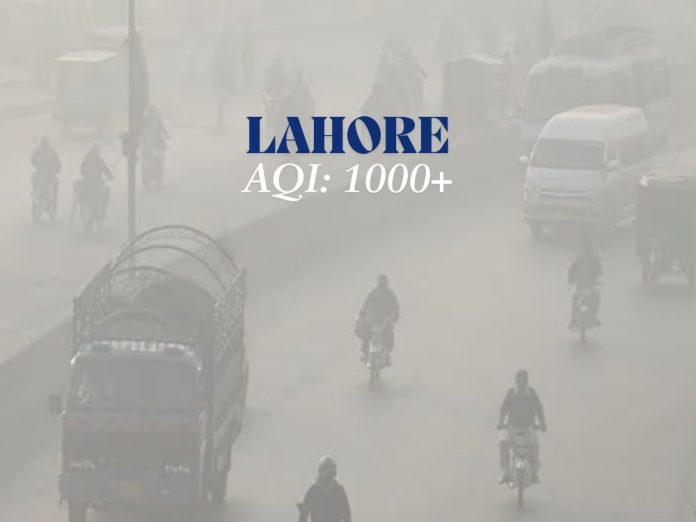Lahore [Pakistan], November 3, 2024: Air pollution in Lahore has surged to dangerous heights, reaching an AQI level of 1,067—an astonishing 40 times the World Health Organization’s (WHO) recommended limit. The spike has sparked widespread health warnings, and experts are calling for urgent measures to address the critical pollution levels affecting millions.
On Saturday, Lahore’s PM2.5 pollutant concentration reached a deadly 610 micrograms per cubic meter, far exceeding WHO’s safe threshold of 15, reported the Express Tribune. The thick smog, a toxic mix of diesel fumes, crop burning emissions, and seasonal weather, has blanketed Lahore for days, turning the city’s air into a health hazard. Winds carrying polluted air from across the Indian border further aggravated the conditions, pushing Lahore to the third-highest position on the global pollution index, following Delhi and Kinshasa.
Air quality readings near the Indian border recorded unprecedented AQI spikes between 1,500 and 1,800 early Saturday, before temporarily lowering to 283 with a shift in wind patterns. However, meteorologists have cautioned that this reprieve may be brief. “We have never reached a level of 1,000,” said senior environmental official Jahangir Anwar. “The air quality index will remain high for the next three to four days.”
Residents are grappling with the psychological effects of the toxic air. “As a mother, I am full of anxiety,” shared Lilly Mirza, who noted that this year’s pollution is markedly worse. After attending an outdoor event with her son in a high-pollution zone, she felt “completely terrorised,” wondering if a “pollution bomb” had gone off.
In response, authorities have enforced emergency restrictions. Schools have limited outdoor activities, adjusted hours, and remote work for government and private employees begins Monday. Tuk-tuks with two-stroke engines are now banned, and street vendors using open flames face new regulations. Additionally, four high-risk areas in Lahore will be monitored closely to mitigate pollution sources, according to Express Tribune.
The health consequences of PM2.5 exposure are severe, linked to strokes, heart disease, respiratory issues, and lung cancer, according to WHO. A University of Chicago report estimates that Lahore’s air pollution reduces life expectancy by an alarming 7.5 years. UNICEF further reports that nearly 600 million children across South Asia live under hazardous pollution levels, with half of all childhood pneumonia cases linked to poor air quality.
Despite the challenges, many citizens have little choice but to continue their daily routines in hazardous conditions. “What can a poor painter like me do if the government can’t fix this? I will keep the mask on and work,” said 40-year-old painter Rehmat, echoing the resilience of Lahore’s working class amid the crisis.



